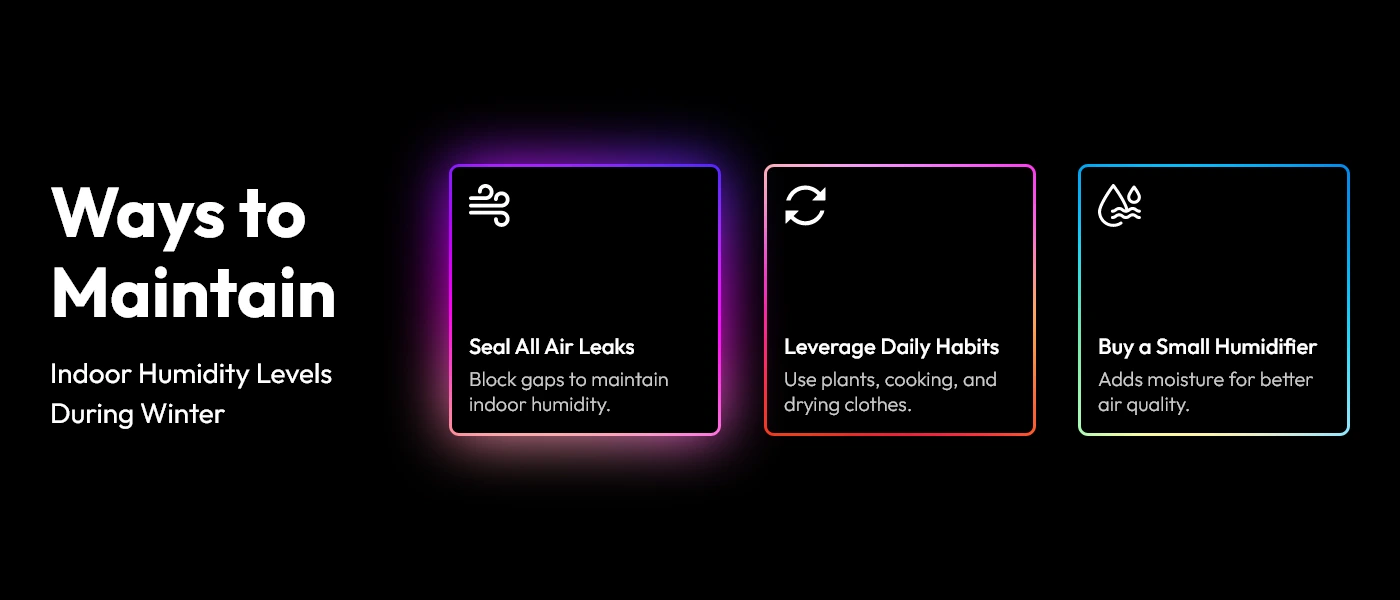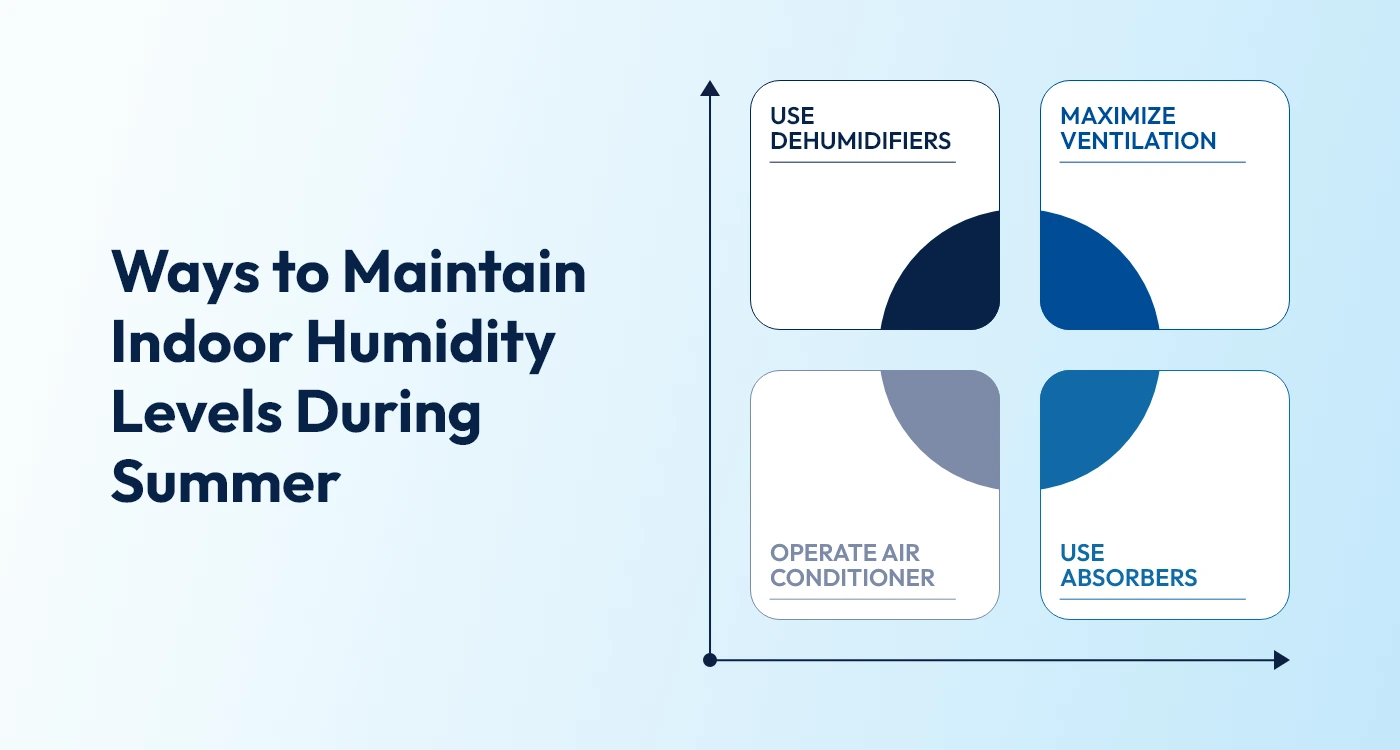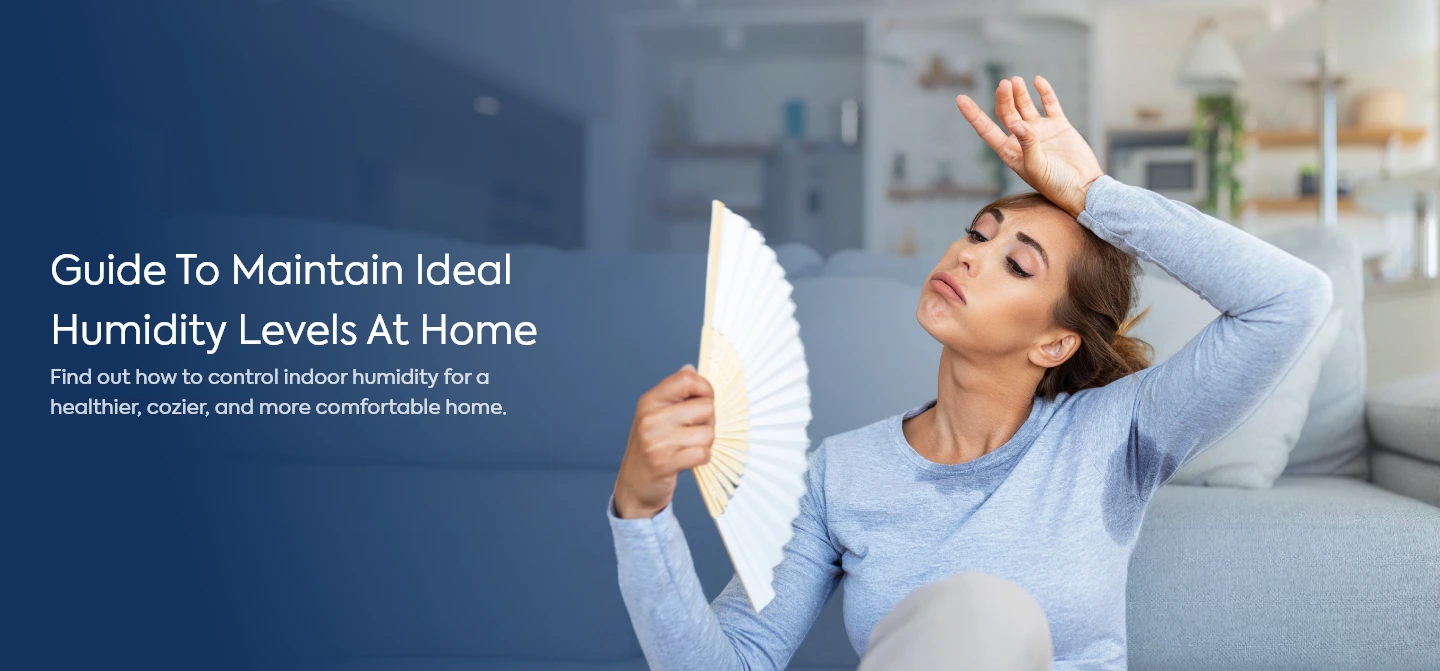Nobody wants to live in a home that is either too dry or too humid. Improper humidity levels are prone to health risks. If humidity levels are very high, it can cause serious health issues and even, damage your home. If they’re very low, it can lead to dry skin, sore throats, asthma, and troubled breathing.
While the outside temperature can’t be changed, the humidity levels in your homes can be balanced effortlessly. A few adjustments in HVAC systems in your homes in Noblesville can lead to big differences. It allows you to restore moisture, increase comfort, sustain good health, and combat health issues that occur due to temperature change.
We have listed the best ways to maintain humidity levels, improve indoor air quality, and create a healthier and more comfortable living space.
Ways to Maintain Indoor Humidity Levels
Follow these effective ways to maintain indoor humidity and feel comfortable during the seasonal temperature changes in winter and summer!
Tips for Winter Season

1. Look for Air Leaks and Seal Them
Identifying and sealing air leaks is one of the top ways to enhance indoor humidity levels during winter. Hot air contains more moisture than cold air, which is why heating your home in winter days helps you maintain the moisture level. However, air leakage causes the heat to escape and dry out the air.
Sealing holes around windows, doors, and ventilation openings keeps your home warm and prevents moisture loss. To find air leaks, check under doors and windows for moisture or frost. Also check floors, walls, and areas around pipes, insulation, and toolbars. If you notice moisture or frost in these areas, there is a warning sign about an air leak.
2. Add Humidity through Daily Home Activities
Several daily activities help to give moisture to your home and keep you and the family comfortable for colder months. Taking a hot shower releases steam, heating the air and adding moisture to the area. Cooking on the stove, boiling water or leaving bowls with water near heating sources can also help maintain indoor moisture. Besides, keeping windows open whenever possible during winter lets moist air enter your home instead of escaping, helping maintain indoor humidity and prevent dryness. Home plants can also contribute by freeing moisture in the air.
3. Buy a Small Humidifier
If you don’t want to leave open windows for extra moisture, try using a small humidifier. Investing in high -quality humidifiers improve relief and promotes a healthier living environment for your family. A small humidifier can prevent dryness, combat irritation and discomfort by adding moisture to the inside air.
Simply pick an energy-efficient model that is featured with adjustable settings for better control and maintenance. Unfailing equipment prevents dry skin, allergies and respiratory problems when the indoor air tends to dry. To ensure optimal performance of the small humidifier, don’t forget to perform its regular maintenance including cleaning and filters replacement.
Tips for Summer Season

1. Use Dehumidifiers
Installing a dehumidifier helps reduce moisture in humid areas like basements, bathrooms, and kitchens. This equipment can keep indoor air balanced by removing excess moisture. Keep humidity around 50% to prevent mold, mildew, and odors. Clean and empty it regularly for best performance.
Choose the right size for your space, and a built-in hygrometer helps monitor humidity levels. Place it in a central spot with good airflow for better results.
2. Improve Indoor Ventilation
Proper ventilation helps control indoor humidity and improve air quality. Use exhaust fans in the bathroom and kitchen to remove excess moisture from showering and cooking. Open windows when possible, to allow fresh air to circulate, and prevent convention build-up. Ceiling fans and cross-ventilation techniques also help maintain balanced moisture levels, which reduces the risk of moisture and mold growth.
Keep furniture away from walls to improve airflow and avoid moisture buildup. To ensure proper air circulation, regularly check air ducts and blockages of ventilation. Using a dehumidifier with ventilation can further improve moisture control and create a healthier and more comfortable indoor environment.
3. Turn On AC
A.C. at your home removes moisture naturally while cooling your home. Running the fan on auto mode helps prevent excess humidity. This makes it the most effective gadget to manage humidity levels of your home during summertime.
For high efficiency and zero performance issues in the future, clean your AC and maintain it properly. In addition to this, using a programmable thermostat can also help regulate temperature and moisture levels, keeping your home comfortable.
4. Keep Spaces Dry
Using moisture-absorbing materials like silica gel, charcoal, or moisture-absorbing bags in closets, drawers, and storage areas helps control humidity. These materials effectively reduce dampness, preventing mold and musty odors. Replace or recharge them regularly for optimal performance.
Hire Skilled HVAC Technicians
HVAC experts in Noblesville specialize in installing, repairing, and maintaining humidifiers, dehumidifiers, and climate control systems. These specialists evaluate humidity levels, suggest suitable solutions, and service heating and cooling units to maintain healthy air conditions and keep indoor air humidity between 40-50% RH.
Call Good Guys Home Services for a full range of HVAC services, from installation and repair to replacement. Their expertise helps balance indoor environment and render great comfort in residential spaces. Download our app today to connect with experts in a few clicks.
To maintain proper humidity levels in your home, you can use a humidifier in dry conditions and a dehumidifier in humid areas. Keep humidity around 40-50% with proper ventilation, open windows when possible, and use exhaust fans in kitchens and bathrooms.
The ideal indoor humidity level should range between 40-50% RH. This range helps prevent mold, mildew, and dust mites while keeping the air comfortable.
There are several ways to feel comfortable in high humidity:
- Use fans and dehumidifiers to remove extra moisture.
- Wear light, breathable clothing and drink plenty of water.
- Keep blinds closed on hot days and use AC or fans for airflow.
- Take cool showers and use moisture-wicking bedding.
No, 50% humidity is not too high in winter. It is a comfortable level, but winter weather can cause condensation. To avoid moisture buildup and mold growth, aim for a humidity level of 40-45% RH in colder months.
To reduce humidity in a house without AC, consider these solutions:
- Open windows and use exhaust fans to improve airflow.
- Place charcoal or silica gel in damp areas to absorb moisture.
- Use a dehumidifier, dry clothes outside, and fix leaks.
- Keep houseplants like peace lilies to help regulate moisture.






